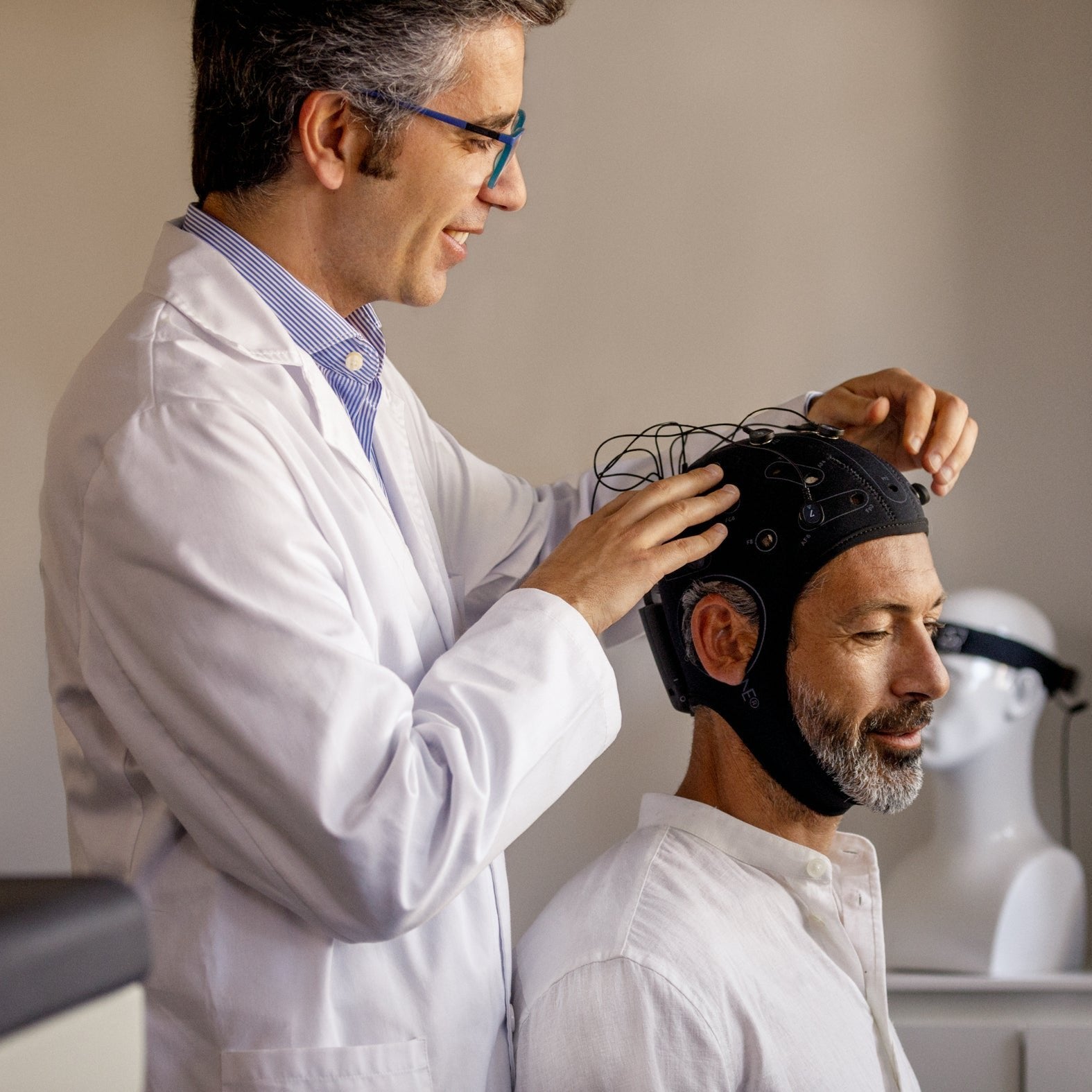This is part 2 of our analysis of the different considerations for a life lived well and healthy. Part 1 can be found here: it focuses on the daily facets of healthy longevity.
While daily lifestyle choices lay a strong foundation to slow down aging and to improve well-being, they are not the only dimensions to take into account if you want to reap the full potential of health and wellness.
Indeed, your healthy daily habits are similar to the attention you put on each step when you run : bringing your attention to your steps definitively helps you run better, more efficiently, and hence it has profound benefits in the long term. However, to continue with the running metaphor, you still need to know where you are. You also need to measure your morphology, to adjust your movement, to choose the right shoes. Besides, you may want to have a look at the map and plan your race: where to accelerate, where to stay within your limits, etc.
In health and wellness, the same considerations apply. Your annual 360° check-up is a fundamental milestone of your longevity quest, as well as in-depth retreats from time to time - apart from retreats you may attend in emergency situations. It is important and efficient to approach wellness and longevity with anticipation and planning: set your approach with 12 months and 3 years horizons.

Integrative medical check-ups: once a year is ideal
In health wellness, the first holistic check-up defines your reference point. Once you have one, you can plot your trajectory from time to time. The best approach is to choose a 360° diagnosis such as the ones offered by integrative medical labs. They typically consists in a large batch of tests and measures, from bottom to top, including the physical parameters, the mind, the brain, and the energy (the level of your meridians, etc.).

The best practice is to schedule such a check-up every 12 months. Some longevity seekers are tempted to reiterate the diagnostics every 3 months but it is usually not that productive, because in most cases, it takes 3 to 6 months to see the profound effects of the treatments (responsible for ~20% of the wellness improvements) and of the lifestyle habits (~80% of the improvements).
Before the modern medical science as we know it today, traditional medicines were very focused on such check-ups, because they fundamentally allow prevention, as well as anticipation. And anticipating health and wellness is the most efficient strategy you can dream of: you correct the course of your longevity before anything happens, i.e., even before symptoms appear - symptoms are merely a messenger to alert you about an imbalance somewhere in your body or mind.

The latest advances in western medicine are reaching a similar stage: leveraging advanced DNA testing and sophisticated diagnosis technologies, in order to identify potential risks and act upon them before they have a chance to materialise.
The best and most advanced check-ups are offered as add-on services in leading longevity clinics such as Chenot Palace Weggis, Clinique Nescens, or SHA Wellness Clinic. Such check-ups are extremely detailed and actionable - but let’s be honest, they are also not cheap.
There are less expensive options to establish a holistic diagnosis on a yearly basis, that will ensure you know your body and mind inside out as well, and how it’s evolving over the years. My recommendation is to combine the modern and traditional approaches, for a truly holistic view. In terms of traditional assessments, Ayurveda and Traditional Chinese Medicine offer diagnostic approaches that are both accessible and actionable. Depending on your focus, you may also consider other traditional sciences (such as Tibetan medicine, TAIM, shamanism …).

Finally, in terms of modern medical assessment, it’s such a hot topic right now: there is a strong investment thesis on longevity unfolding amongst health-conscious entrepreneurs and investors. If you live in a big city, chances are high that you can find 2 or 3 different providers of in-depth longevity check-ups. Many boast excellent technology, backed by serious medical experts.
What you should essentially be looking for is the quality of the report - as detailed and “raw” as possible. Indeed, as years go past, you may change your check-up provider, but you will always want to compare your latest metrics with those of the past years, as it reflects how well you’re beating aging.
What to Look For
In-Depth Testing
Go beyond basic blood work and body fat metrics; consider functional and strength testing, 3D scans, hormones, sexuality assessment, inflammation and lifestyle markers, micronutrient levels, genetic predispositions, as well as traditional medicine indicators (your dosha, the level of your meridians etc.).

Preventive Perspective
Choose a practitioner who views health holistically, not just from a disease-focused perspective.
Actionable Insights
Work with your provider to create an action plan based on check-up results, allowing you to make adjustments throughout the year.
By catching small issues early, you make proactive changes that can yield benefits decades into the future.
Annual Retreats: A Holistic Reboot and recharge
An annual health retreat, whether solo or with family, provides an opportunity to step back from the daily whirlwind, to reconnect with yourself, and to look back and reinforce on your wellness goals.

An intentional break - regardless of where you do it - has profound effects on physical and mental wellness, creating the space for rejuvenation. And if you retreat in one of the destinations recommended by Serenity Ways, you’re on to a life-changing experience.
What to Expect in a Retreat:
Customized Wellness Programs
Look for retreats that offer personalized programs based on your wellness goals—whether that’s physical fitness, mental clarity, emotional balance, beating burn-out, breaking addictions, healing Parkinson, or spiritual: there are amazing retreats for each and every goal.

Learn
The greatest part that you take away from retreat is actually not your progression during the program: it is what you learn and integrate so that when you go back to your normal life, your day-to-day takes a different course. Therefore, when choosing your retreat, pay attention to the quality of the sessions with nutritionists, fitness trainers, and holistic health experts - the advice you will get from them is what makes the difference.

Family-Oriented Retreats
Consider options that welcome families, promoting wellness as a shared experience and instilling healthy habits in children. And let’s face it, it’s easier to dedicate time when you know your loved ones are enjoying their time too and do not have to be separated from you.

In terms of rhythm, annual retreats offer a very efficient dedicated time to reboot and recharge your mind and body, setting a strong foundation for the coming year.
Program duration: 7 days or more - shorter programs provide a nice boost but lack impact in the long term. And if you can afford, 21-day programs, or 7-day programs twice a year, are the optimal rhythm to optimize your strength today while capitalizing on your longevity.

Planning for Longevity: Acting Today for Tomorrow’s Benefits
Creating a wellness roadmap involves thinking long-term. The lifestyle choices you make today - if you stay consistent in your healthy routines - directly impact your health span. Health span matters more than life span: it’s about the number of years you live in good health. Indeed, longevity isn’t just about living longer but about thriving as you age.
Long-Term Strategies:
- What you do every day (what you eat, how you manage your stress and your thoughts, how much you exercise, your connexion to nature and to loved ones, how much you sleep)
- The quality of your annual check-ups
- Time for an in-depth health wellness retreat once or twice a year
When you take a forward-looking approach to wellness, you set yourself up for an enriched life with extended vitality and mobility, because you slow down aging as much as your body and mind allow.










